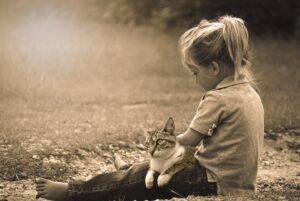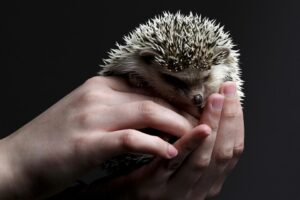
Introduction
Welcoming a pet into the family can be a delightful experience for children and adults alike. Small pets, in particular, are often ideal for kids due to their manageable size and relatively easy care requirements. This guide explores some of the top small pets for kids, highlighting their characteristics, care needs, and the benefits they bring to young pet owners.
The Benefits of Small Pets for Kids
Small pets offer numerous advantages for children. They are generally easier to care for than larger animals, making them suitable for teaching responsibility and empathy. Moreover, they often require less space, which is perfect for families living in apartments or homes without large yards. The companionship of a small pet can also provide emotional support and enhance a child’s social skills through interaction and care routines.
Top Small Pets for Kids
Hamsters
Hamsters are among the most popular small pets for kids. They are relatively inexpensive, easy to care for, and don’t require a lot of space. Hamsters are nocturnal, which means they are more active during the evening, making them ideal for children who have school during the day.
These small rodents are best housed in a cage with ample space for exercise, such as a wheel and tunnels. It’s important to handle them gently to build trust, as hamsters can be a bit nippy if startled. Regular cleaning of their habitat is essential to maintain hygiene and prevent odors.
Guinea Pigs
Guinea pigs are social creatures that enjoy interaction and companionship. They are slightly larger than hamsters and thrive in pairs or small groups. Guinea pigs are known for their gentle nature, making them excellent pets for young children who are learning how to handle animals.
Providing a spacious cage with hiding places, ramps, and chew toys will keep guinea pigs happy and active. They require a diet rich in vitamin C, as they cannot produce it themselves, so fresh vegetables and specially formulated pellets are necessary.
Rabbits
Rabbits are affectionate and sociable animals that can form strong bonds with their human companions. They come in various breeds, each with its own temperament and size. Rabbits require more space than hamsters or guinea pigs, so a larger cage or a designated room for exercise is ideal.
Rabbits benefit from a diet of hay, fresh vegetables, and a small number of pellets. They also need regular grooming, especially long-haired breeds, to prevent matting. With proper care and attention, rabbits can be wonderful companions for children.
Gerbils
Gerbils are small, active rodents that are easy to care for and fun to watch. They are social animals that do well in pairs or small groups. Gerbils are less likely to bite than hamsters, making them a good choice for younger children.
A gerbilarium, which is a tank-style habitat, is ideal for gerbils as it allows them to dig and burrow. They require a balanced diet of seeds, grains, and vegetables. Regular interaction and playtime can help keep gerbils happy and healthy.
Fish
Fish are excellent starter pets for kids who are interested in aquatic life. They come in a variety of species, each with its own care requirements. Betta fish, goldfish, and guppies are popular choices due to their vibrant colors and relatively simple care needs.
Setting up an aquarium can be a fun family project, and maintaining it teaches children about responsibility. Fish require regular feeding, water changes, and monitoring of water conditions to ensure a healthy environment.
Budgerigars (Budgies)
Budgerigars, commonly known as budgies, are small parrots that are friendly and easy to train. They are known for their ability to mimic sounds and even learn a few words, providing endless entertainment for children.
Budgies need a spacious cage with perches, toys, and room to fly. A balanced diet of seeds, pellets, and fresh fruits and vegetables is essential for their health. Regular interaction and socialization help keep budgies happy and engaged.
Hermit Crabs
Hermit crabs are unique and low-maintenance pets that can be fascinating for children to observe. They live in shells, which they change as they grow, and require a habitat with both land and water areas.
Hermit crabs need a diet of commercial hermit crab food, along with fresh fruits and vegetables. Maintaining proper humidity and temperature levels in their habitat is crucial for their well-being. These pets are more for observation than handling, making them ideal for children who enjoy watching animals.
Choosing the Right Pet
When selecting a small pet for your child, consider factors such as the child’s age, personality, and level of responsibility. Some pets require more interaction and care than others, so it’s important to choose a pet that matches your child’s ability to provide care.
Additionally, consider the family’s lifestyle and the amount of space available for the pet. Some small pets, like rabbits and guinea pigs, require more room to roam, while others, like fish and hermit crabs, need specific habitat setups.
Preparing for a New Pet
Before bringing a new pet home, ensure you have all the necessary supplies and information to provide proper care. Research the specific needs of the pet, including dietary requirements, habitat setup, and health care.
Involve your child in the preparation process to help them understand the responsibilities involved in pet ownership. Setting up the pet’s habitat, learning about its care needs, and establishing a routine can be both educational and exciting for children.
Teaching Responsibility and Care
Owning a pet is a great way to teach children about responsibility and empathy. Encourage your child to take an active role in the pet’s care by assigning age-appropriate tasks such as feeding, cleaning, and playtime.
Supervise your child initially to ensure they understand how to handle the pet gently and correctly. Over time, as they become more confident and responsible, they can take on more tasks independently.
Conclusion
Small pets offer children companionship, entertainment, and valuable life lessons. With careful consideration and preparation, you can find the perfect pet that fits your family’s lifestyle and your child’s interests. Whether it’s a playful hamster, a colorful fish, or a chatty budgie, the joy and enrichment a small pet brings to a child’s life are immeasurable.
#ChatGPT assisted in the creation of this article.








